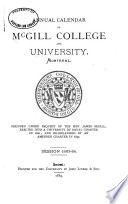 | Edward Brooks - Geometry, Modern - 1901 - 278 pages
...^D^=ABxAC-BDx CD. Therefore, etc. PROPOSITION XXXVI. — THEOREM. The product of the two diagonals of a quadrilateral inscribed in a circle is equal to the sum of the products of its opposite sides. Given. — Let ABCD be any quadrilateral inscribed in a circle, AC... | |
 | 1903 - 898 pages
...the radii are in harmonical progression. 4. Prove that the rectangle contained by the diagonals of a quadrilateral inscribed in a circle is equal to the sum of the rectangles contained by the opposite sides. A circle is described round an equilatenil triangle ABC. The points... | |
 | Euclid - Euclid's Elements - 1904 - 488 pages
...the rect. EA, AD. VI. 16. QED PROPOSITION D. THEOREM. The rectangle contained by the diagonals of a quadrilateral inscribed in a circle is equal to the sum of the two rectangles contained by its opposite sides. Let ABCD be a quadrilateral inscribed in a circle,... | |
 | Queen's University (Kingston, Ont.) - 1906 - 314 pages
...diameter of the circle described about the triangle. The rectangle contained by the diagonals of a. quadrilateral inscribed in a circle is equal to the sum of the two rectangles contained by its opposite sides. Two similar polygons may be so placed that the lines... | |
 | Euclid - Mathematics, Greek - 1908 - 456 pages
...TTT/AIKO'TIJTOS rav (v ru> KVK\.W The theorem may be enunciated thus. The rectangle contained by the diagonals of any quadrilateral inscribed in a circle is equal to the sum of the rectangles contained by the pairs of opposite sides. I shall give the proof in Ptolemy's words, with the addition... | |
 | Civil Service Commission of Canada - Civil service - 1910 - 240 pages
...in the duplicate ratio of their homologous sides. 4. The rectangle contained by the diagonals of a quadrilateral inscribed in a circle is equal to the sum of the two rectangles contained by its opposite sides. 5. The locus of a point, the ratio of whose distances... | |
 | McGill University - 1883 - 404 pages
...the two other sides produced. .10. The rectangle contained by the diagonals of a quadrilateral figure inscribed in a circle is equal to the sum of the rectangles contained by its opposite sides. 1 1. Find the areas of the square and regular hexagon inscribed in... | |
 | Education - 1911 - 1334 pages
...the other sides of the triangle. Euclid, VI. 3rd. 2. The rectangle contained by the diagonals of a quadrilateral inscribed in a circle, is equal to the sum of the two rectangles contained by its opposite sides. 3. In a convex solid angle, the sum of the face angles... | |
 | Ontario. Dept. of Education - 1913 - 128 pages
...diameter of the circle described about the triangle. The rectangle contained by the diagonals of a quadrilateral inscribed in a circle is equal to the sum of the two rectangles contained by its opposite sides. Two similar polygons may be so placed that the lines... | |
 | Ontario. Legislative Assembly - Ontario - 1914 - 998 pages
...diameter of the circle described about the triangle. The rectangle contained by the diagonals of a quadrilateral inscribed in a circle is equal to the sum of the two rectangles contained by its opposite sides. Two similar polygons may be so placed that the lines... | |
| |